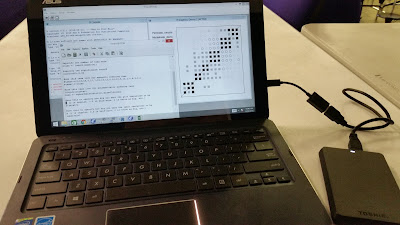Lab meeting 2: Behind the scenes with created kinds
For those just joining us, the "lab meeting" series describes the latest research results from Core Academy of science researchers and student interns.
If you've read this blog for any length of time, you probably know that I'm keenly interested in created kinds. The idea of the created kind has a long history in Western thought, but I won't rehearse that history here (read this paper if you're interested). What is a created kind? Well, that turns out to be a difficult question. It's easier to describe than define, so watch this video if you haven't before:
Now the question that nags at my brain is whether any of this created kind stuff is meaningful or just wishful thinking. On the one hand I can think of good reasons to believe that what we think of as species are malleable and temporary, but on the other, I can think of good reasons why there is and must be stability to God's living creation. But how do I go about testing whether this or that group of species represents a created kind?
That's what we're trying to do this year at Core Academy. We've collected information on more than 200 mammal groups, and we're going to try to analyze those groups using the same method in the video above. When we get done, we'll ask whether or not our results are consistent.
What will that tell us? If we can see a consistent pattern among the mammals, then we can be more confident that what we discover is real and not just some mathematical accident. That will increase our confidence that creationist research really is on the right track. I think that's a pretty good payoff.
Feedback? Email me at toddcharleswood [at] gmail [dot] com. If you enjoyed this article, please consider a contribution to Core Academy of Science. Thank you.
